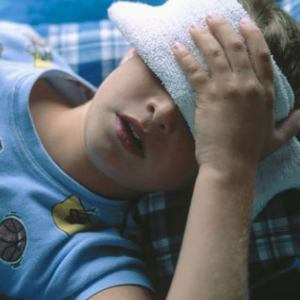 A small but significant number of infants and children under the age of fifteen, 6 in 100,000, annually suffer a stroke. The incident of stroke is noticeably higher for in utero and premature babies, as well as children under the age of two. These high risk groups likewise exhibit a higher incidence of cerebral palsy stemming from their stroke. In adults, the causes of stroke are often the result of life-style choices, such as smoking or drinking; or the consequence of high blood pressure and/or cholesterol. In children, strokes are generally caused by birth defects and trauma, along with infections, such as encephalitis or meningitis or blood disorders such as sickle cell.
A small but significant number of infants and children under the age of fifteen, 6 in 100,000, annually suffer a stroke. The incident of stroke is noticeably higher for in utero and premature babies, as well as children under the age of two. These high risk groups likewise exhibit a higher incidence of cerebral palsy stemming from their stroke. In adults, the causes of stroke are often the result of life-style choices, such as smoking or drinking; or the consequence of high blood pressure and/or cholesterol. In children, strokes are generally caused by birth defects and trauma, along with infections, such as encephalitis or meningitis or blood disorders such as sickle cell.
Due to the prevailing myth that stroke occurs only in adults, child victims often seek out and receive delayed treatment. The National Stroke Association notes that while adults usually pursue treatment within 12-24 hours of a stroke, it may take as much as 48-72 hours before children are taken to a hospital when exhibiting similar symptoms. Studies have shown that there is a critical effective treatment window of 3 hours following the onset of child stroke symptoms. Professionals recommend that parents implement the F.A.S.T. method for immediate assessment of a possible stroke (F.A.S.T. stands for Face, Arms, Speech and Time). Through a series of simple performance requests, followed by “time is of the essence” action in seeking treatment, caretakers may be able to mitigate the disabling effects of these incidents in children.
Post- treatment, there are a number of effectual OT interventions for use with child stroke victims. These include therapies to improve eye-hand coordination, optical tracking, and peripheral visual awareness. Another proven method is Interactive Metronome (IM), a therapeutic modality designed to improve motor and cognitive skills. A newer therapy combining Modified Constraint Induced Movement Therapy (CIMT) with neuromuscular electrical stimulation shows great promise as well for improvement of coordination in these young victims.
Armed with a $1 million challenge grant from NIH, Gillette Specialty Healthcare and the University of Minnesota are studying this new technique which entails short-term immobilization of the non-affected arm/hand and OT, alternate use of a noninvasive magnetic field to stimulate the healthy side of the brain. OTs work with these patients on a series of exercises for the stroke-affected side to increase strength, flexibility and hand function. Funding runs out for the study in August of this year, and with results still incomplete, can it really be determined how stimulation enhances gains made by OT alone? The next step researchers hope for is a more extensive study which applies low level electronic stimulation simultaneously with OT to determine the answer.
If you are a pediatric/neurologic Occupational Therapist interested in working with child stroke victims or seeking a new environment to showcase your skills, call Centra at 800 535 0076 and let us find your next challenge.